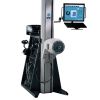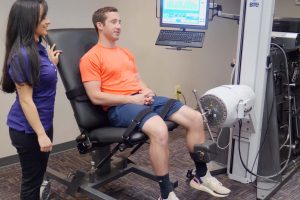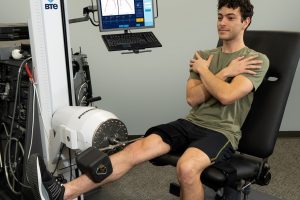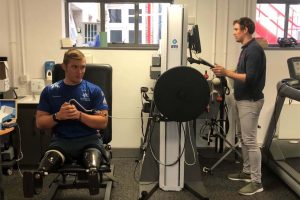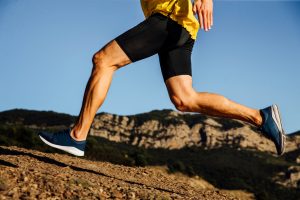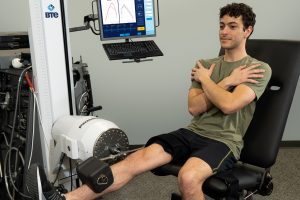
New Protocol: Strength Assessment of the Lower Extremities
BTE System GuidesThis new lower extremity testing protocol allows researchers to quickly collect precise data on multiple types of movement. Researchers at the Orthopaedic Research Institute of Bournemouth University chose PrimusRS as the “gold standard” in muscular assessment.
Researchers at the Orthopaedic Research Institute (ORI) based at Bournemouth University chose the PrimusRS as the “gold standard” in muscular assessment to develop a new protocol for the lower extremities.
This new lower extremity testing protocol allows researchers to quickly collect precise data on a variety of tests with multiple types of movement. Read a summary of the protocol from the authors below, and check out the full publication here.
From the protocol authors at Orthopaedic Research Institute – Bournemouth University:
Developing a New Lower Extremity Testing Protocol
Accurate assessment of the performance of the human muscular system is vital in the study of physical medicine and rehabilitation. In this brief article we share our experience of conducting isometric lower extremity testing using the PrimusRS system.
Studies indicate that increased muscle strength is associated with improved functionality of patients undergoing rehabilitation, thus highlighting that methods of muscle strength measurement should be accurate and reliable. Therefore, it is important to use a robust system such as the PrimusRS and design an appropriate protocol to ensure accurate assessment.
The PrimusRS is currently recognized as the gold standard for upper limb strength measurement, but evidence related specifically to lower extremity testing remains unclear. At the Orthopaedic Research Institute (ORI), based at Bournemouth University in the United Kingdom, our team have introduced detailed protocols for completing the assessment of lower extremity testing of isometric strength.
Furthermore, we have also collected gait parameters for individuals as we believe it is useful to combine assessments of functional performance (such as gait analysis) with specific tests of muscular performance.
This is because whilst it may be assumed that increased muscle strength improves functional performance, this may not always be apparent. This understanding is required for the improved future design of rehabilitation protocols and research strategies to assess these approaches.
Using the PrimusRS
The PrimusRS system is a versatile, accurate and perfect dynamometer for objective lower extremity testing and evaluation. With its multiple attachments and movement settings, the PrimusRS was easily adaptable to test quadriceps and hamstrings muscle groups.
In contrast to other dynamometers, the PrimusRS records data quickly and accurately, with capability of real-time coefficient of variation calculation. Along with the visual feedback, this feature gave our researchers confidence in terms of reliability and validity of the data produced.
Structure of the Studies
The outcome measures used in our protocol included the testing of maximal, voluntary, isometric contraction (MVIC) of the quadriceps and hamstrings muscle groups. MVIC was measured as maximal force (Newton-metres (Nm)) using tool/pad 701.
Participants were asked to perform three, three-second maximal contractions of knee extension and knee flexion. A full experimental methodology published in the Journal of Visualised Experiments can be found here.
Results
A comprehensive protocol and results for MVIC of the quadricep and hamstring muscle groups, for healthy adults can be found here. We are now applying the same protocol to within clinical studies evaluating patients who have total hip replacement surgery.
The PrimusRS results from our study examining healthy adults confirmed that it was a safe, effective, and repeatable technique that we could use in clinical populations for lower extremity testing.
Overall, the data collected on healthy individuals using the PrimusRS are representative of textbook reference results for isometric strength testing obtained on other equipment. Therefore, it is proposed that our protocol using the PrimusRS as an assessment tool is effective in the assessment of muscular strength in this population.
Implications for the Rehabilitation Field
At ORI, we have been focusing on individualized rehabilitation plans. We believe that in order to have better long-term outcomes and compliance with rehabilitation plans, it is necessary to understand individual goals.
Understanding the extent and pattern of muscle weakness in earlier stages of any musculoskeletal disease can help develop interventions to target muscle weakness and subsequently prevent the development of strength asymmetries observed at the later stages of the disease.
Therefore, detailed information on muscle strength is necessary in order to design specific rehabilitation training programmes. The PrimusRS can help with objective muscle strength assessment and be used as a therapeutic system, performing rehabilitation in individual patients.
Conclusions
The PrimusRS is a tool that we have used to test over 400 healthy individuals and patients over the past four years. What strikes our research team the most is the capability of this system to accommodate different tests. We have used PrimusRS to test beyond lower limb extremities, and to measure functional movements such as: maximum hand grip strength for moving transfer boards; abdomen muscle strength post breathing exercises, and orthopaedic surgeons’ hand forces when performing hip operations. These assessments all have unique challenges, yet due to the PrimusRS’s multiple attachments and movement settings, they were possible.
At ORI we continue to work on our international research aimed at enhancing the patient experience before and after total joint replacement, and we believe the PrimusRS will assist us significantly in achieving our goal.
Shayan Bahadori
ORI Project Manager
Bournemouth University

